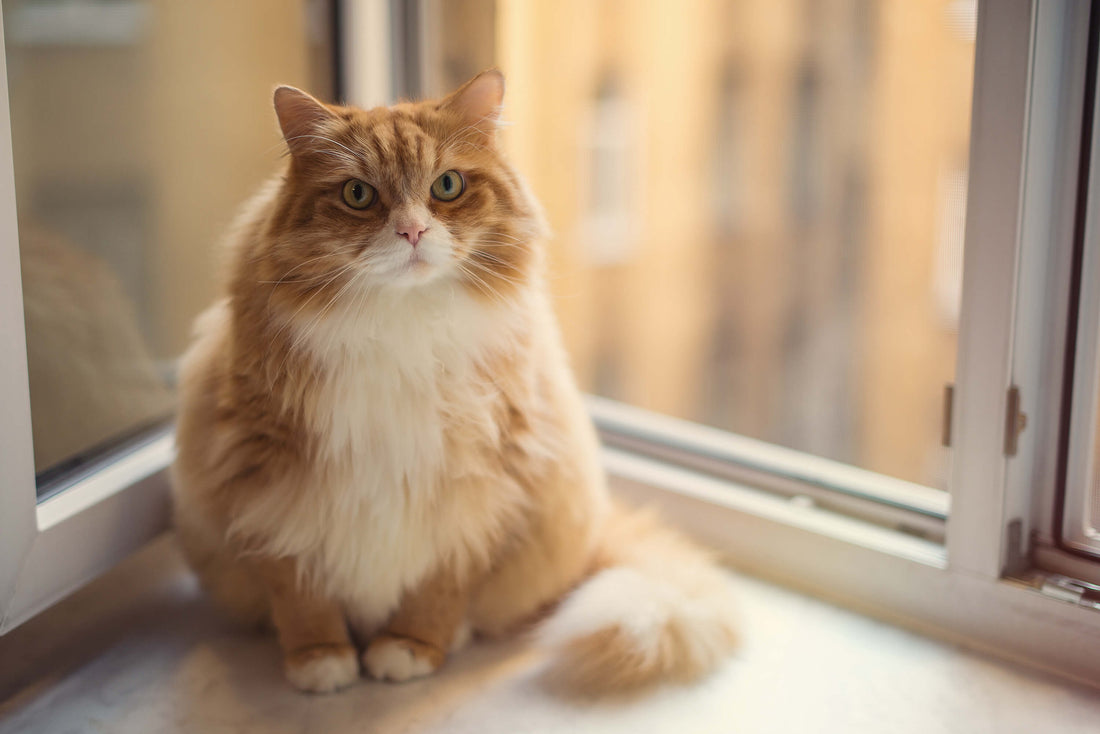
3 Ways to Tell if Your Cat Is Overweight
Cats come in all shapes and sizes. Just because your furry friend is a little larger than the kitty next door doesn’t necessarily mean that they’re overweight. Some cats are just a bit rounder than others, depending on their breed. However, monitoring your cat’s weight and body composition is an important part of maintaining their life-long health.
Obesity in cats is a real problem, with links to numerous serious illnesses, and it should be treated as soon as possible. Unfortunately, it’s not always easy to determine whether your cat’s weight is healthy just by looking at numbers on a scale. If you are concerned about your cat’s weight, there are a few ways to determine if they’ve really been putting on too much fat. Here are a few key identifiers.
Hanging fat
Cats often develop a saggy stomach when they get older. Called the primordial pouch, this loose skin along the belly is a normal part of cat anatomy and actually protects your cat’s organs. The primordial pouch usually swings when a cat walks, which is how you can distinguish it from an overweight belly.
When a cat is overweight, their large stomach won’t sway side to side. Overweight cats usually have a much rounder, firmer belly that might even drag on the floor.
Their ribs and spine are harder to find
There are certain bones in your cat’s body that should be easy to feel if they are at a healthy weight. It should be easy to feel the ribs when you touch your cat’s side. If you feel a layer of fat, instead, then your pet is likely overweight.
The same is true for your cat’s spine. Run your hand along their back and see if you can feel the slight protrusion of their spinal vertebrae. If their spine can’t easily be felt, then it’s likely covered in a layer of excess fat.
They look different from certain angles
Looking at your cat from different angles is another easy way to determine if they’ve gained some weight. Look at your cat from the back to see if their body starts to narrow around the waistline. Cats that are overweight will have a rounder or more rectangular profile from the back. The same is true when looking at your cat from the front or from above.
Problems that arise with overweight cats
.jpg)
While a little weight gain can happen from time to time, it’s important that your cat doesn’t gain too much. Cats can develop obesity, which can result in many problems for your furry friend. Not only is the extra weight bad for their joints, but cat obesity could lead to serious illnesses, including heart disease.
One common illness associated with cat obesity is liver disease, which can result in reduced liver function and sometimes death. Joint problems in overweight cats can turn into osteoarthritis, which will cause your pet pain when they try to do simple actions like climbing stairs or jumping into your lap.
Diabetes is another illness often associated with overweight cats. If your cat develops diabetes, they will likely have to be put on a restrictive diet and potentially medication for life. Some cats can develop diabetes without being overweight, but obesity usually makes the disease harder to control.
Put simply, an overweight cat is going to have a reduced quality of life and, usually, a shorter lifespan. But don’t fret—if your cat is already overweight, there are things you can do to help.
Helping your cat lose weight
If you suspect your cat is overweight, the first thing you should do is have them examined by a veterinarian. Even if your self-assessment indicates obesity, your vet should be the one to determine if your cat is overweight and how much weight they should lose. Then, they can recommend a controlled weight loss plan.
One of the most common ways to help cats lose weight is putting them on a diet. This means feeding them a recommended amount of food at scheduled times throughout the day. They might even need a special diet specifically formulated for weight loss. Having a consistent feeding routine is a great way of ensuring that your cat gets all the nutrition they need without going overboard. Your cat might fuss when they notice that there’s less food than usual, but it’s important that you don’t give in and feed them extra food or treats.
Exercise is another fun and healthy way of helping your cat lose weight. Cats normally enjoy resting a lot throughout the day, but having them exercise multiple times a day is important. You can do this by investing in cat toys that your pet can run around and play with.
It might be heartbreaking to deny your cat a treat when they’re begging, but helping them maintain a healthy weight is essential to giving them a long and happy life. Consult with your veterinarian about possible diet plans and food options to ensure your kitty stays on track. Your cat will quickly get used to their lifestyle change and are sure to be happier when they start living healthier.


